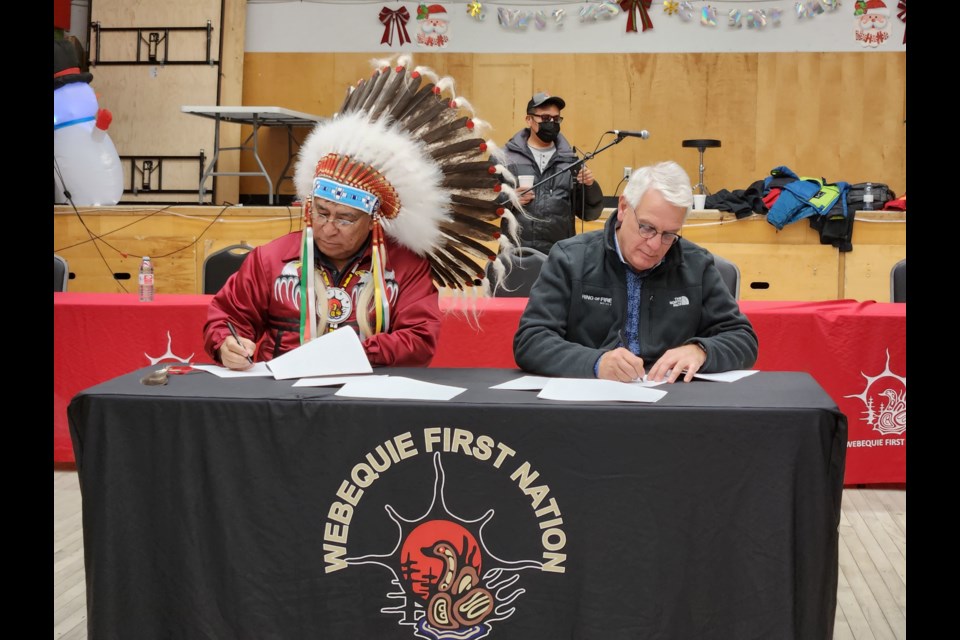After more than a decade of collaboration, Ring of Fire Metals (formerly Noront Resources) and Webequie First Nation have inked a “landmark” stepping stone agreement toward a full partnership in the first mine to be developed in the James Bay region.
A Dec. 6 news release from the company announced the signing of a memorandum of understanding (MOU) with the Ojibway community, outlining a “framework for collaboration” on proposed mine development in the Ring of Fire area, situated some 500 kilometres northeast of Thunder Bay.
Webequie is the closest community to the Ring of Fire, located on Winisk Lake about 100 kilometres to the west of the exploration grounds.
The release said the agreement spells out how the two parties will work together on upcoming exploration efforts and on advancing negotiations on a partnership agreement for the proposed Eagle’s Nest Mine.
Eagle’s Nest is a high-grade nickel, copper and platinum group metals deposit and is the most advanced mineral prospect in the company’s stable of mineral assets. If developed, it would the first mine in the Ring of Fire to go into production with an initial mine life of 11 years and the likelihood of extending its operational life for a further nine years.
Currently, there are no available timelines on when mining in the Ring of Fire could begin. The proposed mining and community access roads into the Far North remain in the engineering and environmental assessment stages..
Webequie and its neighbour to the south, Marten Falls First Nation, are also the two proponents for the proposed community access roads into the region.
Webequie’s proposed 107-kilometre all-season road would connect the community’s airport with the mineral-rich area around McFaulds Lake, better known as the Ring of Fire, and would expedite the movement of people and material into the future mining camp.
In a statement, Webequie Chief Cornelius Wabasse encouraged Queen’s Park, Ottawa and other First Nation communities to support them in this endeavour.
“As leaders and critical decision makers, we have a social responsibility with our members and that is to find ways to sustain our community through long-term relationship agreements that will bring and foster livelihood.
“We are exercising our sovereignty and the right to pursue economic sustenance in a manner that respects the land and brings opportunity for our young people.”
Stephen Flewelling, the company’s acting CEO, called the MOU was an important step forward in a long-standing relationship of more than 12 years.
“We have worked well with Webequie for many years, but this MOU signifies a formal transition to a new phase of collaboration on the future of the Ring of Fire.
“Canada has a once-in-a-generation opportunity to develop the critical minerals the world needs to decarbonize, and it’s vital that Indigenous communities play a central role in how these projects are developed on their traditional territories.
“This MOU demonstrates our commitment to work together with Webequie to develop projects based on shared values, sustainable opportunities for economic and community development and collaborative decision making.
“It reflects our approach to developing critical mineral projects that deliver mutual, long-term benefits for Webequie community members with a deep respect for their culture and land.”
The former Noront Resources was rebranded Ring of Fire Metals in September following last April’s acquisition of the Toronto junior mining company by Wyloo Metals of Australia.
The shuttered ‘Esker’ exploration camp was reopened last fall in preparation for a resumption of exploration activity across the company’s 156,000-hectares of claims, which feature some 70-plus nickel drill targets.
